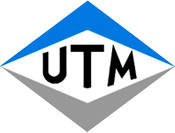- All
- Product Name
- Product Keyword
- Product Model
- Product Summary
- Product Description
- Multi Field Search
Views: 0 Author: Site Editor Publish Time: 2025-07-29 Origin: Site









Aluminium scaffolding is a popular choice in construction and maintenance due to its lightweight, corrosion-resistant, and durable properties. Here's a detailed breakdown of its features, advantages, and applications:
Material
Made from high-grade aluminium alloys (often 6000 series), offering strength comparable to steel at ~1/3 the weight.
Naturally corrosion-resistant, ideal for outdoor/humid environments.
Design Types
Tube-and-Coupler: Versatile; tubes connected with clamps.
Modular/System Scaffolding (e.g., Cuplock, Kwikstage): Pre-engineered frames/ledgers with boltless connections for quick assembly.
Mobile Towers (Aluminium TRUSS): Wheeled bases for easy relocation, often with platforms.
Components
Standards (uprights), ledgers (horizontals), transoms, braces, base plates, platforms (aluminium decks or wood), guardrails, and castors.
✅ Lightweight: Easy to transport, handle, and assemble (reduces labor/time).
✅ Corrosion Resistance: No painting/galvanizing needed; lasts longer in harsh conditions.
✅ Non-sparking: Safer near flammable substances vs. steel.
✅ Reusable & Recyclable: Sustainable with low long-term costs.
✅ Quick Assembly: Modular designs simplify setup/dismantling.
⚠️ Lower Load Capacity: ~50% less than steel (suits light/medium-duty work).
⚠️ Higher Initial Cost: More expensive than steel (offset by longevity).
⚠️ Flexibility: Can deflect more under heavy loads—requires proper bracing.
⚠️ Electrical Conductivity: Unsafe near live wires; requires insulation measures.
Construction: Façade work, painting, plastering on low/mid-rise buildings.
Maintenance: Window cleaning, HVAC repairs, warehouse access.
Events: Stages, lighting rigs, temporary structures.
Shipbuilding/AVIATION: Lightweight access in confined spaces.
Load Limits: Never exceed manufacturer ratings (typically 3-4 kN/m² for medium-duty).
Stability: Use outriggers, braces, and tie-ins for tall towers (>4x base width).
Inspection: Check for cracks/dents before use; avoid damaged parts.
Training: Follow OSHA/EN standards; ensure users are certified.
Initial Price: ~20-30% higher than steel scaffolding.
Lifetime Value: Lower transport/labor costs + longer lifespan = better ROI for frequent use.
Projects requiring frequent repositioning (e.g., painting contracts).
Sites with corrosion risks (coastal, chemical plants).
Jobs where speed and ease of handling are critical.
For heavy-duty industrial use (e.g., supporting concrete pours), steel scaffolding remains preferable. Always consult a scaffolding engineer for high-risk projects!
